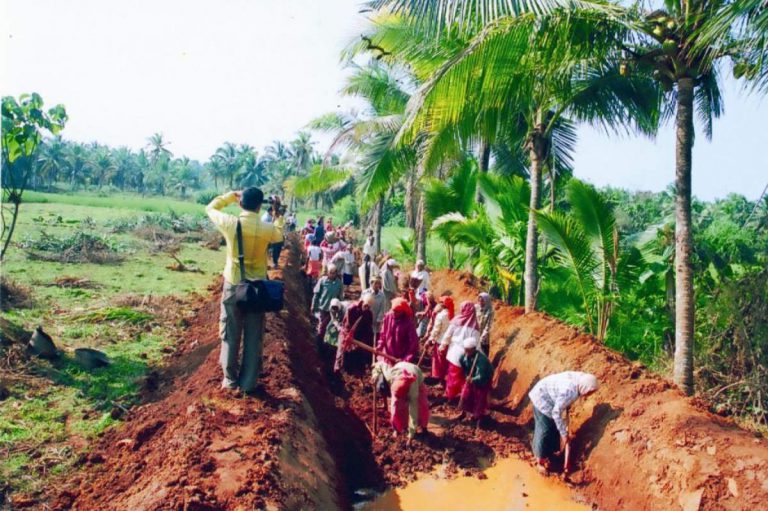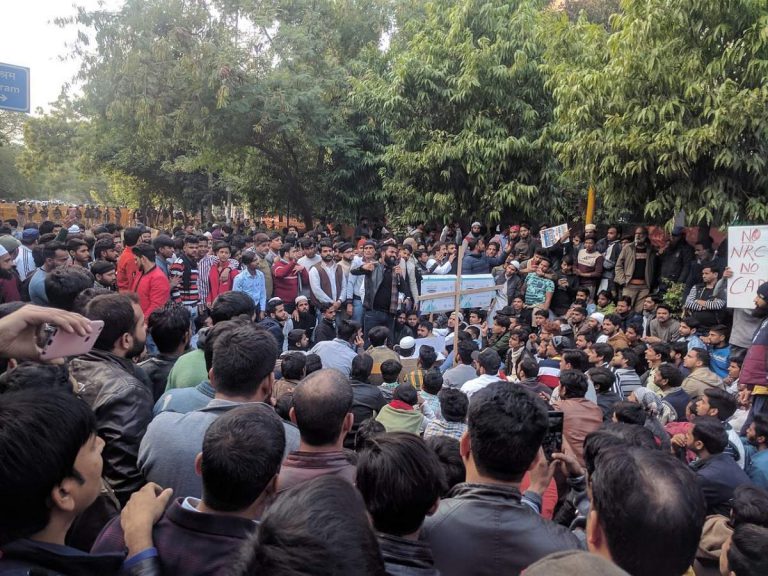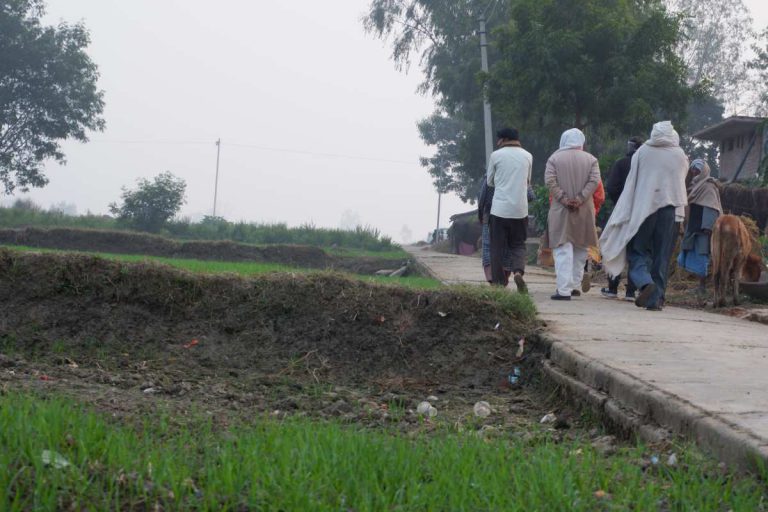Becoming a Teacher in India – A Web of Illusions
Akansha identifies herself as passionate about education. She is currently studying Master of Arts in Education at Dr. B.R. Ambedkar University Delhi. Her academic interests revolve around systems and structures, specifically at the school and teacher education levels. She believes in the power of education to change people’s lives and has been working towards this vision.
Justice Verma Committee (2013) recommends a transparent procedure of pre-entry testing of candidates to pre-education programs considering their varied local contexts. These testing procedures differ from merit to entrance tests. Recently, the Central Universities Entrance Test has come into the picture for admissions into different courses and for entering a teacher education program like B.Ed, B.El.Ed, M.Ed. offered in central universities like Delhi University, Jamia Milia Islamia, Banaras Hindu University, etc. These universities are major public universities that also participate in this CUET. The test aims to assess the competency of candidates for admission to premier higher education institutions. The test has 27 domains for domain-specific questions. Candidates pursuing teacher education must select ‘teaching aptitude’ as their domain. As per the format, the teaching aptitude domain consists of inquiries about teaching different subjects. CUET can be a boon for coaching institutes as teaching aptitude is not a 12th-class subject or even a subject taught in school.
Eventually, an aspirant may have to rely on coaching institutes to score well in the CUET. Getting into T.E. programs offered in central universities would be easy for students from a stable socioeconomic background because they may have access to resources like appropriate reading material, classes, tutoring, support, and guidance, which would help with their preparation and scoring good marks. But what about the aspirants from marginalized and disadvantaged groups, which have the bare minimum resources?
Another thing that needs highlighting is that CUET is an online computer test. In India, some people don’t have resources like computer devices to learn and practice computer skills, and eventually don’t know how to use a computer. I raise the question again, what about the aspirants who don’t have access to the resources to learn computer skills?
This sudden shift from pen-paper tests to online tests is another feature that makes entry into teacher education programs exclusive and not inclusive. I have witnessed experiences of people who were sitting around me to give online entrance to an M.ED course but could barely attempt the paper properly because they were not able to use a computer. There are students in different districts of the country who are used to appearing for offline papers. They are not used to online tests conducted in computer centers. If the candidate somehow manages to prepare for the entrance syllabus like CUET, they are eliminated when they fail to operate a computer.
Meanwhile, when discussing the entry process to T.E. Programmes, we should also reflect upon what these entrance tests aim to evaluate in a candidate who makes them a good teacher. The format of the majority of the tests are objective-type questions that only have one right answer but is teaching this simple with one right answer, and a candidate without any experience of being a teacher can give a teaching aptitude test? With this, I want to bring up another question.
Who gets to become a teacher?
A candidate from a stable socioeconomic background with access to enough resources to prepare, a candidate with an inherent quality of a teacher, or a privileged candidate? There’s a huge possibility that this would add to the divide between caste and class, creating a perspective that teaching is a profession for only the privileged class.
Once public universities shut their doors to becoming teachers, aspirants reach private universities, which charge loads of money in exchange for learning. The commercialization of TE began in 1993 when there was a sudden increased demand for teachers due to the introduction of the District Primary Education Programme, and private players came into the picture. Thousands of TEIs still need to attempt to provide complete teacher education. Instead, they print degrees and sell them for money. Thousands of people buy these degrees, and that’s why these TEIs cum money-making factories are still functioning. I can’t conclude if people are attending these kinds of TEIs because of a lack of options left to them and the innocence of these aspirants or as a clever move to add the number of degrees to their resumes. (Srinivasan, S. (2015). Revamping Teacher Education)
The growing money-making-factories of TEIs lead to questioning the credibility of education and a teacher as a profession. The commercialization of Teacher education is one of the major reasons the quality of teacher education is declining. About 88 percent of teacher education institutions offer diploma programs,d about 96 percent of those offering Bachelor of Education are in the private sector. (Gunjan Sharma, 2019)
To restore the quality and credibility of teacher education and the teaching profession, a regulatory system that is more than just input-focused should take action on these dysfunctional TEIs. A regulatory system should also focus on the processes in the TEIs because quality can’t be ensured through only input-based regulations.
When a candidate becomes a qualified teacher with a degree, getting a job becomes a task. Teacher recruitment is a concern since it’s unstable; thousands of qualified teachers sit at home, whereas many teacher posts are vacant in schools. Since education is on the concurrent list of the constitution, it is a matter of responsibility for both the union and the state. According to Unified District Information System for Education (UDISE+) data for 2019-20, approximately 9.7 million teachers were teaching in India. A 2021 report by the United Nations Educational, Scientific and Cultural Organization (UNESCO) named ‘State of the Education Report for India: No Teachers, No Class’ reports that more than 1.1 Million teaching positions are vacant in schools across India. 19% of schools out of 15 lakh Schools across India with teacher vacancies. 1.1 Million is a huge number that can also help change the game at schools by improving the Pupil-Teacher Ratio, improving the experience of education for students, creating a better work environment for teachers since workload would be shared, and, most importantly, qualified teachers will get jobs and make use of their education.
The recruitment crisis in government schools lies in a centralized hiring system that takes years to fill vacancies. Qualified teachers are in a dilemma of choosing between government and private schools since government schools’ recruitment process is unstable. Hence, they either have to wait for years or become guest teachers where the recruitment is temporary, whereas, in private schools, the pay scale is 40% less than the government school. (2021 report by the United Nations Educational, Scientific and Cultural Organization (UNESCO) named ‘State of the Education Report for India: No Teachers, No Class’)
Being recruited into a school as a teacher with a good pay scale and professional benefits has now become a matter of luck. Since government schools take years to recruit or recruit guest teachers, and private schools, comparatively, pay less. With this, I raise another question.
When will the teachers be treated as professionals with professional benefits like job security, good pay scale, etc.?
Even though how complicated and complex the domain may be from the inside, there’s a lot of power in the area which can bring positive changes in the education system. I am finding my answers to the questions raised above, but what I can offer now is: The system needs to come up with a better teacher recruitment process that ensures entry of quality teachers into school as well as which is quick compared to the present system, which can help to complete the gap of teacher positions in schools, increase the wage for guest/contractual teachers in the system which can make work motivation for the teacher community.
References
- Sharma, G. (2019, March 2). Policy and Regulatory Changes in Teacher Education in India: Economic and Political Weekly. https://www.epw.in/engage/article/policy-and-regulatory-changes-teacher-education-in-india
- Department of School Education and Literacy. (2012). Vision of Teacher Education in India. Quality and Regulatory Perspective. Vol-1. Report of the High-Powered Commission on Teacher Education Constituted by the Hon’ble Supreme Court of India. Ministry of Human Resource Development, New Delhi. http://14.139.60.153/handle/123456789/180
- Srinivasan, S. (2015). Revamping Teacher Education. Economic and Political Weekly, 50(35), 22–24. http://www.jstor.org/stable/24482309
- CUET Portal. (n.d.). CUET Portal. Retrieved April 22, 2022, from https://cuet.samarth.ac.in/index.php/site/index
- Recognised Institutions (DELHI). (n.d.). National Council for Teacher Education. Retrieved April 22, 2022, from https://www.ncte.gov.in/website/delhi.aspx
- Ministry of Human Resource Development. (2020, July). National Education Policy 2020. https://www.education.gov.in/sites/upload_files/mhrd/files/NEP_Final_English_0.pdf
- NCTE Regulations 2014. (2014). National Council for Teacher Education. https://www.ncte.gov.in/website/ActandRegulation.aspx
- Ministry of Education, UDISE+. (2020). Number of Teachers by School Category and Management Report Id:2001,1003. https://dashboard.udiseplus.gov.in/#/reportDashboard/sReport
- Sarangapani, Padma, M., Thirumalai, B., Ramanathan, A., Kumar, R., & Ramchand, M. (2021). No teacher, no class: state of the education report for India, 2021 (No. 978–81-89218-81–2). UNESCO. https://www.tatatrusts.org/Upload/Content_Files/no-teacher-no-class-state-of-the-education-report-for-india-2021.pdf







The picture with your piece held resonance for me while reading this article because it reminded me of your beginning in the teaching journey. I like the way you begin this ‘story’ with the selection system in teacher preparation programmes. A generalised exam like CUET may not always capture the specific requirements related to becoming a teacher. This year as i was processing admission applications to BElEd. I realised many students who had taken teaching aptitude ( by the way it isn’t compulsory) as a CUET subject; could not have it counted for admission because they had not studied it in grade XII. Teacher recruitment remains inadequate, as you point out, which is perhaps the single most factor that can lead to qualitative improvement in school education systems and proliferation of the private profiteering institutions the bane of pre-service teacher education. I compliment you for raising these important issues that impact school and teacher education in contemporary India.
Thank you for sharing your review of the article.
You’ve raised very valid questions Akansha and the article has been written beautifully. Congratulations! Looking forward read more such articles.
Thank you so much for raising concerns about the current selection procedure for teachers and certainly our government is responsible for answering them and making corresponding changes to improve the current system, loved the article